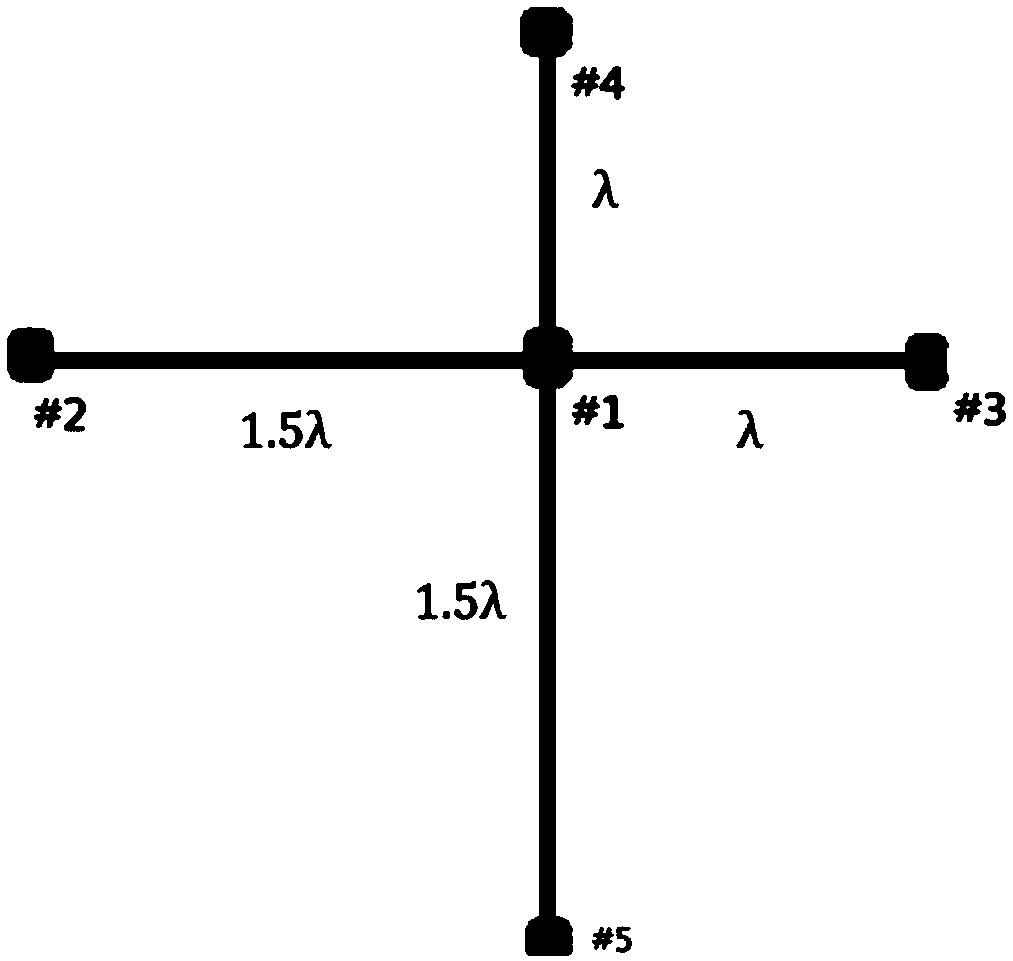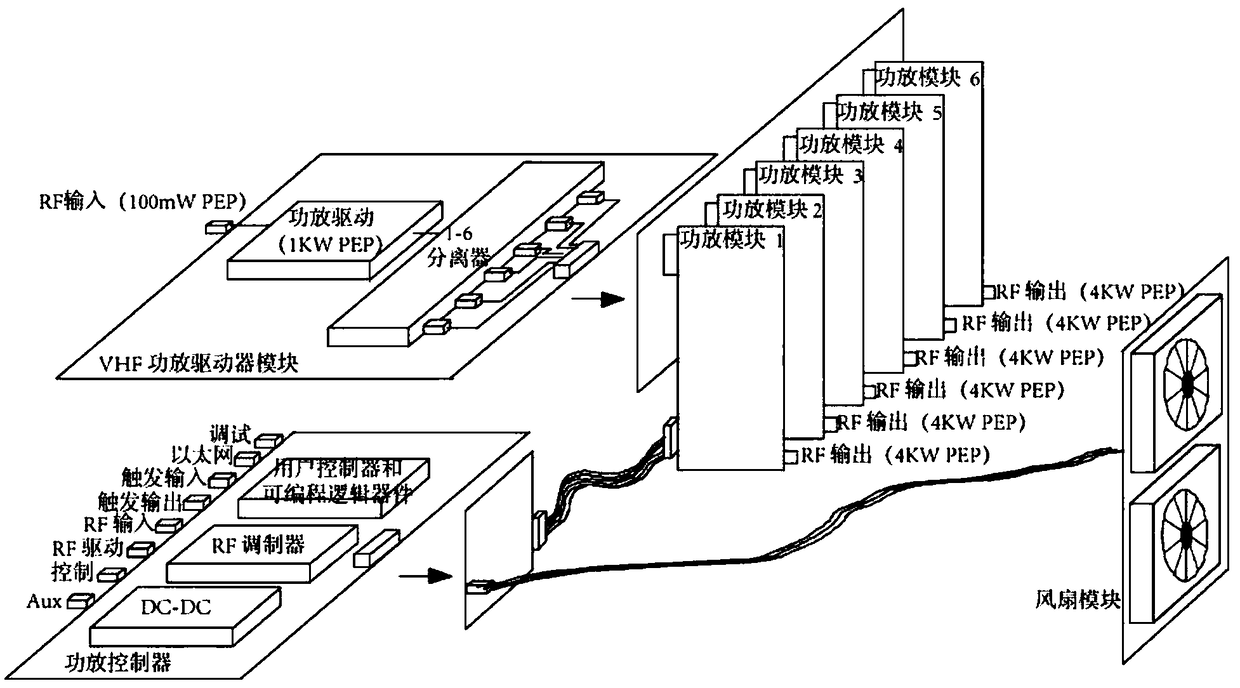Lightning positioning system based on VHF radar and lightning positioning method
A lightning positioning system and lightning positioning technology, applied in the field of lightning detection, can solve the problems of low measurement accuracy of the system, unsatisfactory positioning effect of narrow-band interference technology, construction of selected points and stations, and inconvenient investment and operation management of high-precision time synchronization equipment. problems, to achieve the effect of improving adaptability
- Summary
- Abstract
- Description
- Claims
- Application Information
AI Technical Summary
Problems solved by technology
Method used
Image
Examples
Embodiment 1
[0061] In specific implementation, such as figure 1 As shown in FIG. 1 , it is a schematic structural diagram of an interference receiving antenna in a VHF radar-based lightning locating system provided in Embodiment 1. The interference receiving antenna contains at least two long baseline antenna arrays and at least two short baseline antenna arrays; the long baseline antenna array contains at least two receiving antennas; the short baseline antenna array contains at least two receiving antennas, and the endpoints of the long baseline antenna arrays are connected to The endpoints of the short baseline antenna array are provided with common receive antennas.
[0062] The distance between two adjacent receiving antennas in the long baseline antenna array is greater than the distance between two adjacent receiving antennas in the short baseline antenna array; and the size of the receiving antenna is similar to the wavelength of the VHF radar wave emitted by the VHF radar transmi...
Embodiment 2
[0126] Embodiment 2 provides a lightning location method based on VHF radar. Figure 10 A schematic flow chart of a VHF radar-based lightning location method provided in Embodiment 2, such as Figure 10 As shown, the method includes:
[0127] S1101: Sending VHF radar waves to the lightning, receiving VHF radar echoes reflected by the plasma surface where the lightning is located; measuring the phase at which the VHF radar echoes reach each receiving antenna.
[0128] Specifically, it is possible to send VHF radar waves to the lightning at least twice, and receive the VHF radar echoes reflected each time from the plasma surface where the lightning is located, and the power of the VHF radar waves emitted each time is different; according to the VHF radar echoes and The power difference between the lightning radiated electromagnetic waves identifies the VHF radar echo and measures the phase at which the VHF radar echo reaches each receiving antenna.
[0129] Exemplarily, the VH...
Embodiment 3
[0222] Such as Figure 13 As shown, it is a schematic diagram of the relative position of lightning relative to the receiving antenna in a lightning location method based on VHF radar provided in Embodiment 3, as shown in Figure 13 As shown, the distance between the lightning and the first receiving antenna #1 is R 1 ; The distance between the lightning and the second receiving antenna #2 is R 2 ; The distance between the lightning and the third receiving antenna #3 is R 3 ; The distance between the lightning and the fourth receiving antenna #4 is R 4 ; The distance between the lightning and the fifth receiving antenna #5 is R 5 .
[0223] The specific structure of the receiving antenna is as follows figure 1 As shown, #1 and #2 receive antennas, with a distance of 1.5λ to form a long baseline antenna array-1, #1 and #5 receive antennas with a distance of 1.5λ to form a long baseline antenna array-2; #1 and #3 receive antennas with a distance of 1λ to form a The short b...
PUM
 Login to View More
Login to View More Abstract
Description
Claims
Application Information
 Login to View More
Login to View More - R&D
- Intellectual Property
- Life Sciences
- Materials
- Tech Scout
- Unparalleled Data Quality
- Higher Quality Content
- 60% Fewer Hallucinations
Browse by: Latest US Patents, China's latest patents, Technical Efficacy Thesaurus, Application Domain, Technology Topic, Popular Technical Reports.
© 2025 PatSnap. All rights reserved.Legal|Privacy policy|Modern Slavery Act Transparency Statement|Sitemap|About US| Contact US: help@patsnap.com



